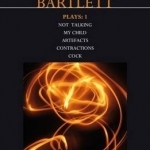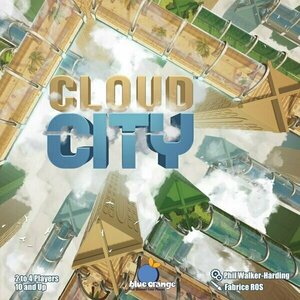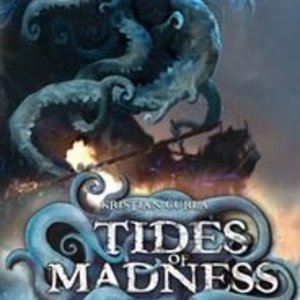
Peekaboo Universe - Find Aliens on the different planets. Funny hide and seek game for toddlers
Games and Education
App
Discover the Universe – find 7 cute aliens! Peekaboo! Guess Who? Play in our hide-and-seek game...

Miller Plays: v. 3: American Clock, The Archbishop's Ceiling, Two-way Mirror
Book
The third volume of Miller's plays reissued with a new jacket in the Methuen Drama World Classics...

Moira Buffini Plays 1: Blavatsky's Tower, Gabriel, Silence, Loveplay
Book
This is a collection of British actress and playwright Moira Buffini's works.

Simon Gray: Plays: Butley; Wise Child; Dutch Uncle; Spoiled; Sleeping Dog: No. 1:
Book
"Butley" - 'What is so wondrous about a play so basically defeatist and hurtful is its ability to be...

Bartlett Plays: 1: Not Talking, My Child, Artefacts, Contractions, Cock
Book
This first collection of Mike Bartlett's plays showcases the adroit expertise and flair of a writer...
Purple Phoenix Games (2266 KP) rated Cloud City in Tabletop Games
Oct 21, 2020
Cloud City is a tile and building placing game for two to four players that is super light and super quick to play. In it players are building architects attempting to plan the greatest use of resources to create the most breathtaking buildings and connections of walkways all above the clouds. The winner is the player who amasses the most City Council votes by creating walkways that span daring lengths and connect same-sized buildings in the sky.
DISCLAIMER: We were provided a copy of this game for the purposes of this review. This is a retail copy of the game, so what you see in these photos is exactly what would be received in your box. I do not intend to cover every single rule included in the rulebook, but will describe the overall game flow and major rule set so that our readers may get a sense of how the game plays. For more in depth rules, you may purchase a copy online or from your FLGS. -T
To setup set aside the starter Cloud tiles for use as player tiles (they have bird icons on them). Shuffle the remaining Cloud tiles and make a giant draw stack. Reveal three tiles for an offer row. Each player draws three Cloud tiles into their hand to be kept secret from the other players. They also will take the appropriate building pieces to place on their starting tiles. Keep the building pieces nearby as they will be used during the game. Players may now begin their bids for architect supreme!
On their turn each player will place a tile from their hand to add to their city, place the corresponding building pieces on the two areas of the tile, optionally build walkways to connect buildings, and then refill their hand of tiles.
When placing a tile, a few rules must be observed: tiles must be placed orthogonally adjacent to an existing tile in the city, may be rotated any direction, and must never be placed outside of a 3×3 tile grid (like the placement rules in Kingdomino).
Once tiles are placed, grab the matching-colored building pieces for the newly placed tile and plop them down on the icons. As the building in the city begin the spring up above the clouds they will need to be connected to buildings of the same height.
To connect these buildings players will take from the supply walkway tokens of different lengths and place them between building of matching height, as shown below. It is these walkways that score the players points as votes from the City Council.
As the player now has only two tiles in hand, a third tile will need to be drawn from either the offer row or blindly from the top of the draw pile. It is now the next player’s turn and the game ends once all players have built their 3×3 city!
Components. This game consists of a bunch of thick cardboard Cloud tiles (48), a bunch more walkway tokens (93), and even more building pieces (96). The tiles are all thick cardboard with minimal but effective art, and are great quality. The walkways are similar thickness and quality and fit into the depressions on the building tops quite nicely. And finally, those building pieces. Oh man, these are great! Super durable plastic (or resin if there’s a difference? I was never very good at chemistry) in three colors and heights. Not needed but certainly appreciated is the detail on each piece with sculpted windows and doors. These are fun pieces to handle during game play and see being built in front of you. Excellent components in this box!
Gameplay is super simple and quick! There are only four real rules to remember (with some restrictions per rule, but they make sense) and as there are only three tiles in hand to build on a turn, AP-prone gamers will still be able to take acceptable-length turns. It’s quick, light, and boasts some great components.
Cloud City is a sure-fire hit and big time winner for me. In fact, I am planning on having my 4-year-old play it with me to truly test the box stating ages 10+. If I can get him to sit still for 30 minutes and concentrate on something other than the tablet or TV I think he will really enjoy it. If you are looking for a great gateway game that even could act as a filler with great components and gameplay that makes you consider the old, “Just one more” attitude, then give Cloud City a look. Blue Orange Games has really increased their production values and choices of games to release. They are remarkable! Just like Cloud City: remarkable!
Purple Phoenix Games (2266 KP) rated Tides of Madness in Tabletop Games
Dec 7, 2021
Tides of Madness is a game of card drafting and set collection in which 2 players are trying to amass the most points by the end of 3 rounds. To setup for a game, shuffle the deck and deal 5 cards to each player. Place the rest aside as a draw deck, and place the Madness tokens within reach. Each of the 3 rounds is broken down into 3 phases: Drafting, Scoring, and Refresh. During the Drafting phase, each player will choose one card from their hand to keep, and place it face-down in front of them. Once both players have chosen their card, they will be revealed simultaneously and placed in your tableau. Take the remaining cards from your hand and pass them to your opponent. You now draft another card from this new hand, and will then pass the cards again. Drafting continues in this fashion until both players have no cards remaining in hand.
The next phase, Scoring, now begins. Players check their tableau and take a Madness token for each card with a Madness icon. The player with the most Madness this round can choose to gain an additional 4 VP or heal (discard) one Madness token. An important note – if at any time a player receives 9 or more Madness tokens, they immediately lose the game! So keep an eye on those cards, and know when to heal. Next, players will score the cards based on printed objectives – sets of suits, majority of a suit, etc. Points are tallied on the score pad. Finally, the Refresh phase gets you ready for the next round. Each player collects their tableau and selects one card to keep for the next round, and another card to discard from the game. Players simultaneously reveal their kept card and it starts the round already in their tableau. Players will draw 2 new cards to total 5 in hand, and the next round is ready to begin. Play ends either if a player has 9 or more Madness, or after a total of 3 rounds. After the 3rd and final round, all points are added up and the player with the highest score wins.
So if you’re thinking this game is basically Tides of Time, you’re pretty much correct. The only difference between the two is the concept/mechanic of the Madness tokens. And honestly, I think the inclusion of the tokens elevates the strategy a bit. In Tides of Time, it really is all about set collection. But with Madness tokens, you’ve got some risk/reward balance to play with. Do you take a card to complete a set even though it gives you a Madness token? Or do you leave it for last so your opponent is forced to take it? The same applies to the extra step in the Scoring phase. Do you risk keeping all your Madness to snag 4 extra VP or is it better (and safer) to heal 1? It just adds another element to the gameplay that makes it feel a little more engaging and exciting than simple set collection.
To touch on components for a minute – this game consists of 18 oversized cards, a bunch of cardboard Madness tokens, a score pad, and small pencil. The artwork on the cards is appropriately thematic and dark, and the text is clear and easy to interpret. The Madness icon on certain cards is a bunch of tentacles on the side of the card, and it is easy to see which cards are affected and which are not. The tokens and score pad are both decent quality as well. Although not 100% necessary, I appreciate the inclusion of a score pad just to help you remember points between rounds. All in all, good production all around.
I have to say that of the two, I prefer Tides of Madness over Tides of Time. You may have noticed that I have rated both games at a 4, but the Madness element in this one just pushes it over the top for me. Both are good games, don’t get me wrong! Either work as a good set collection/drafting game, and are quick to learn and play. Tides of Madness just engages me a little more and that makes the overall gameplay more enjoyable for me. So all in all, Purple Phoenix Games gives this one a maddening 4 / 6.



